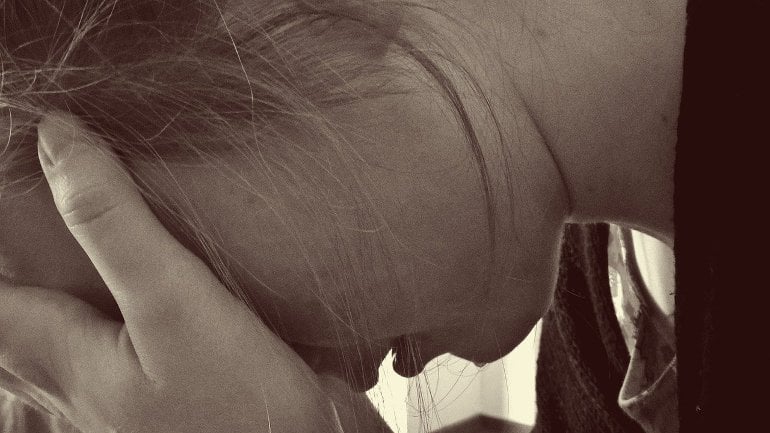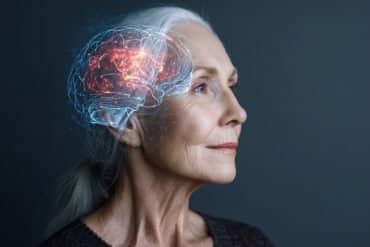Summary: Researchers say the COVID pandemic has created a paradox where mental health has both motivated and generated a barrier to people wanting to improve their physical health via exercise. The study found stress and anxiety are preventing many of those who want to exercise from embarking on physical activity.
Source: McMaster University
New research from McMaster University suggests the pandemic has created a paradox where mental health has become both a motivator for and a barrier to physical activity.
People want to be active to improve their mental health but find it difficult to exercise due to stress and anxiety, say the researchers who surveyed more than 1,600 subjects in an effort to understand how and why mental health, physical activity and sedentary behavior have changed throughout the course of the pandemic.
The results are outlined in the journal PLOS ONE.
“Maintaining a regular exercise program is difficult at the best of times and the conditions surrounding the COVID-19 pandemic may be making it even more difficult,” says Jennifer Heisz, lead author of the study and an associate professor in the Department of Kinesiology at McMaster.
“Even though exercise comes with the promise of reducing anxiety, many respondents felt too anxious to exercise. Likewise, although exercise reduces depression, respondents who were more depressed were less motivated to get active, and lack of motivation is a symptom of depression,” she says.
Respondents reported higher psychological stress and moderate levels of anxiety and depression triggered by the pandemic. At the same time, aerobic activity was down about 20 minutes per week, strength training down roughly 30 minutes per week, and sedentary time was up about 30 minutes per day compared to six months prior to the pandemic.
Those who reported the greatest declines in physical activity also experienced the worst mental health outcomes, the researchers reported, while respondents who maintained their physical activity levels fared much better mentally.
Researchers also found economic disparities played a role, particularly among younger adults.
“Just like other aspects of the pandemic, some demographics are hit harder than others and here it is people with lower income who are struggling to meet their physical activity goals,” says Maryam Marashi, a graduate student in the Department of Kinesiology and co-lead author of the study.

“It is plausible that younger adults who typically work longer hours and earn less are lacking both time and space which is taking a toll.”
After analysing the data, the researchers designed an evidence-based toolkit which includes the following advice to get active:
- Adopt a mindset: Some exercise is better than none.
- Lower exercise intensity if feeling anxious.
- Move a little every day.
- Break up sedentary time with standing or movement breaks.
- Plan your workouts like appointments by blocking off the time in your calendar.
“Our results point to the need for additional psychological supports to help people maintain their physical activity levels during stressful times in order to minimize the burden of the pandemic and prevent the development of a mental health crisis,” says Heisz.
About this mental health research news
Source: McMaster University
Contact: Michelle Donovan – McMaster University
Image: The image is in the public domain
Original Research: Open access.
“A mental health paradox: Mental health was both a motivator and barrier to physical activity during the COVID-19 pandemic” by Jennifer Heisz et al. PLOS ONE
Abstract
A mental health paradox: Mental health was both a motivator and barrier to physical activity during the COVID-19 pandemic
The COVID-19 pandemic has impacted the mental health, physical activity, and sedentary behavior of people worldwide. According to the Health Belief Model (HBM), health-related behavior is determined by perceived barriers and motivators.
Using an online survey with 1669 respondents, we sought to understand why and how physical activity and sedentary behavior has changed by querying about perceived barriers and motivators to physical activity that changed because of the pandemic, and how those changes impacted mental health.
The following results were statistically significant at p < .05. Consistent with prior reports, our respondents were less physically active (aerobic activity, -11%; strength-based activity, -30%) and more sedentary (+11%) during the pandemic as compared to 6-months before.
The pandemic also increased psychological stress (+22%) and brought on moderate symptoms of anxiety and depression. Respondents’ whose mental health deteriorated the most were also the ones who were least active (depression r = -.21, anxiety r = -.12).
The majority of respondents were unmotivated to exercise because they were too anxious (+8%,), lacked social support (+6%), or had limited access to equipment (+23%) or space (+41%). The respondents who were able to stay active reported feeling less motivated by physical health outcomes such as weight loss (-7%) or strength (-14%) and instead more motivated by mental health outcomes such as anxiety relief (+14%).
Coupled with previous work demonstrating a direct relationship between mental health and physical activity, these results highlight the potential protective effect of physical activity on mental health and point to the need for psychological support to overcome perceived barriers so that people can continue to be physically active during stressful times like the pandemic.






